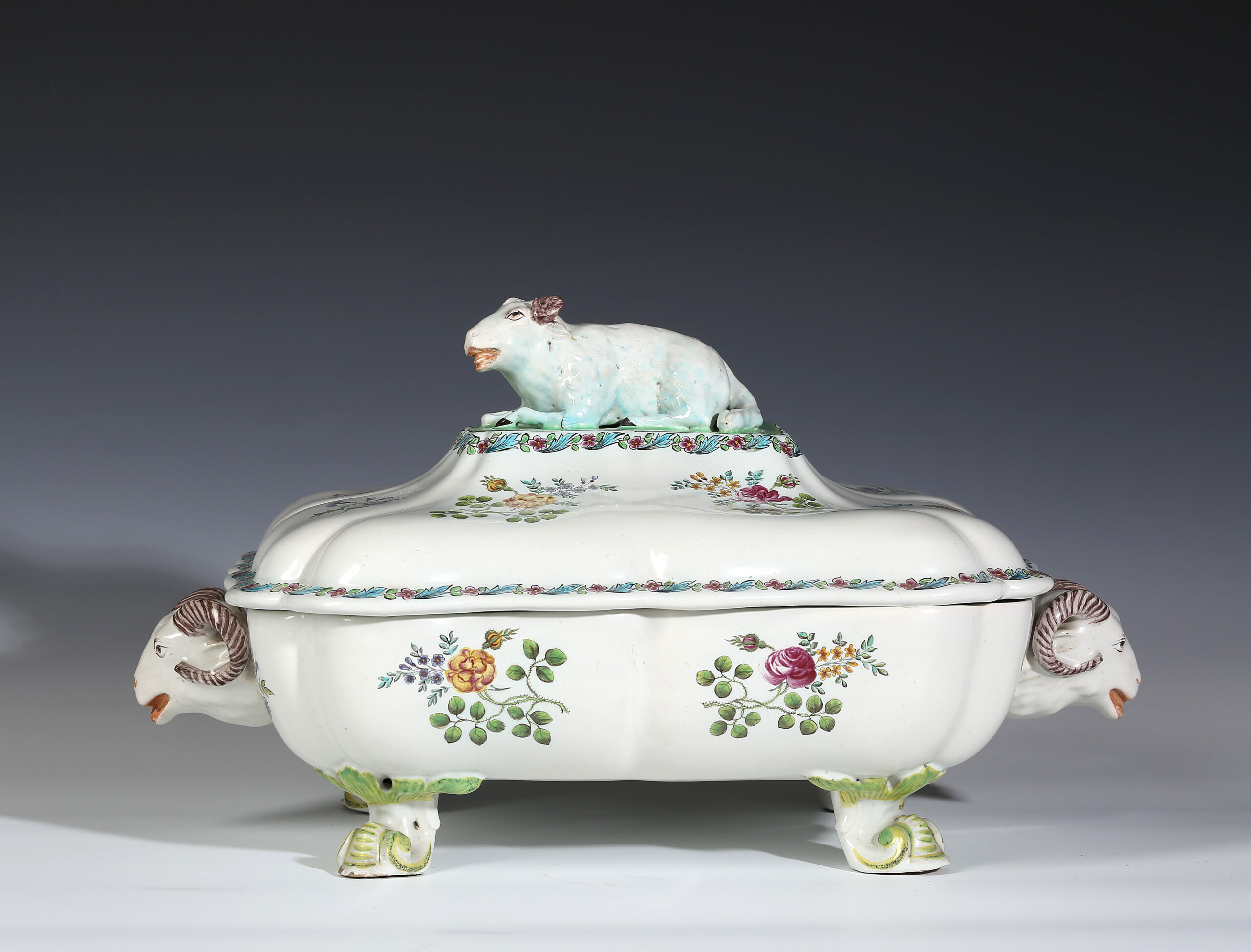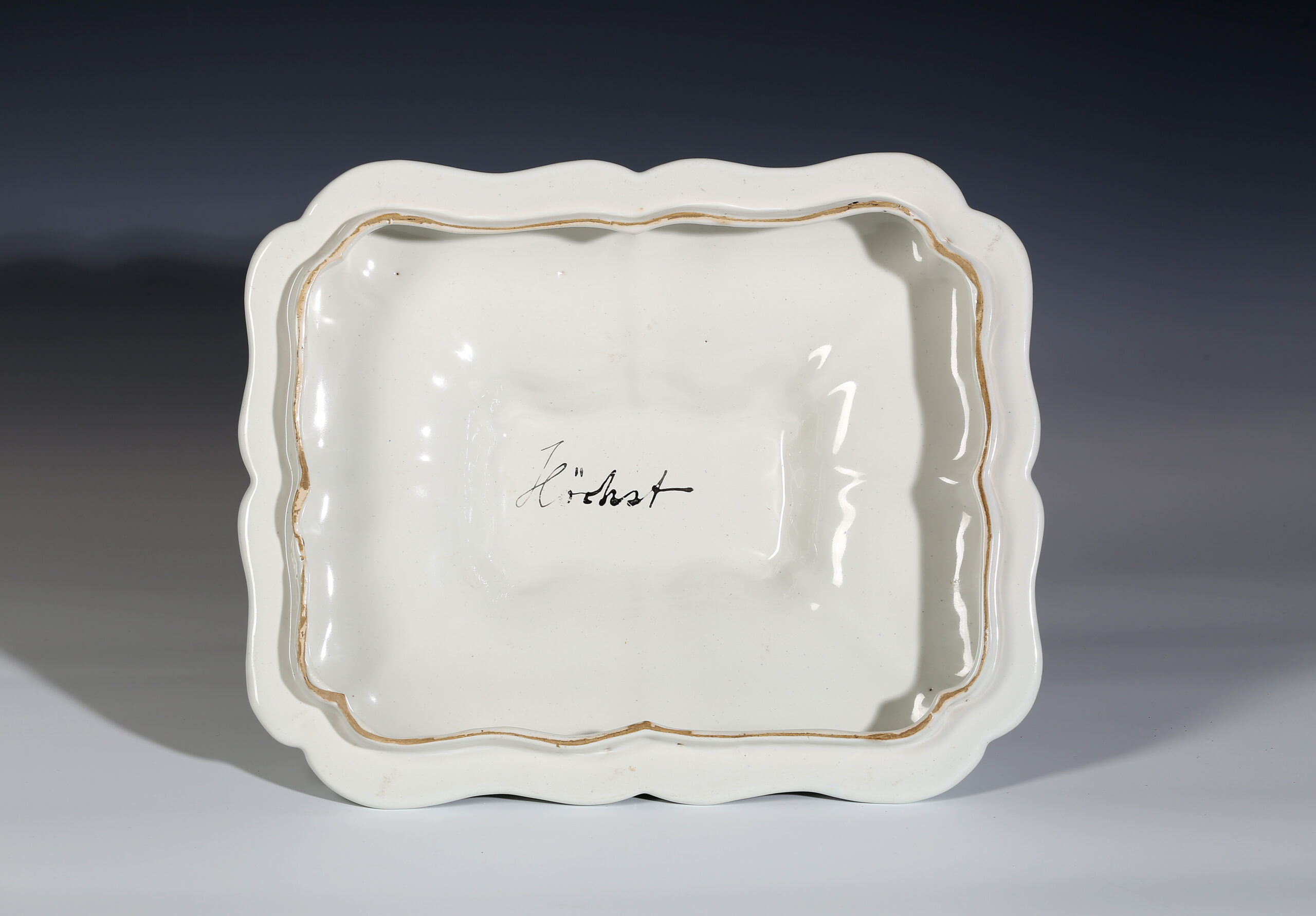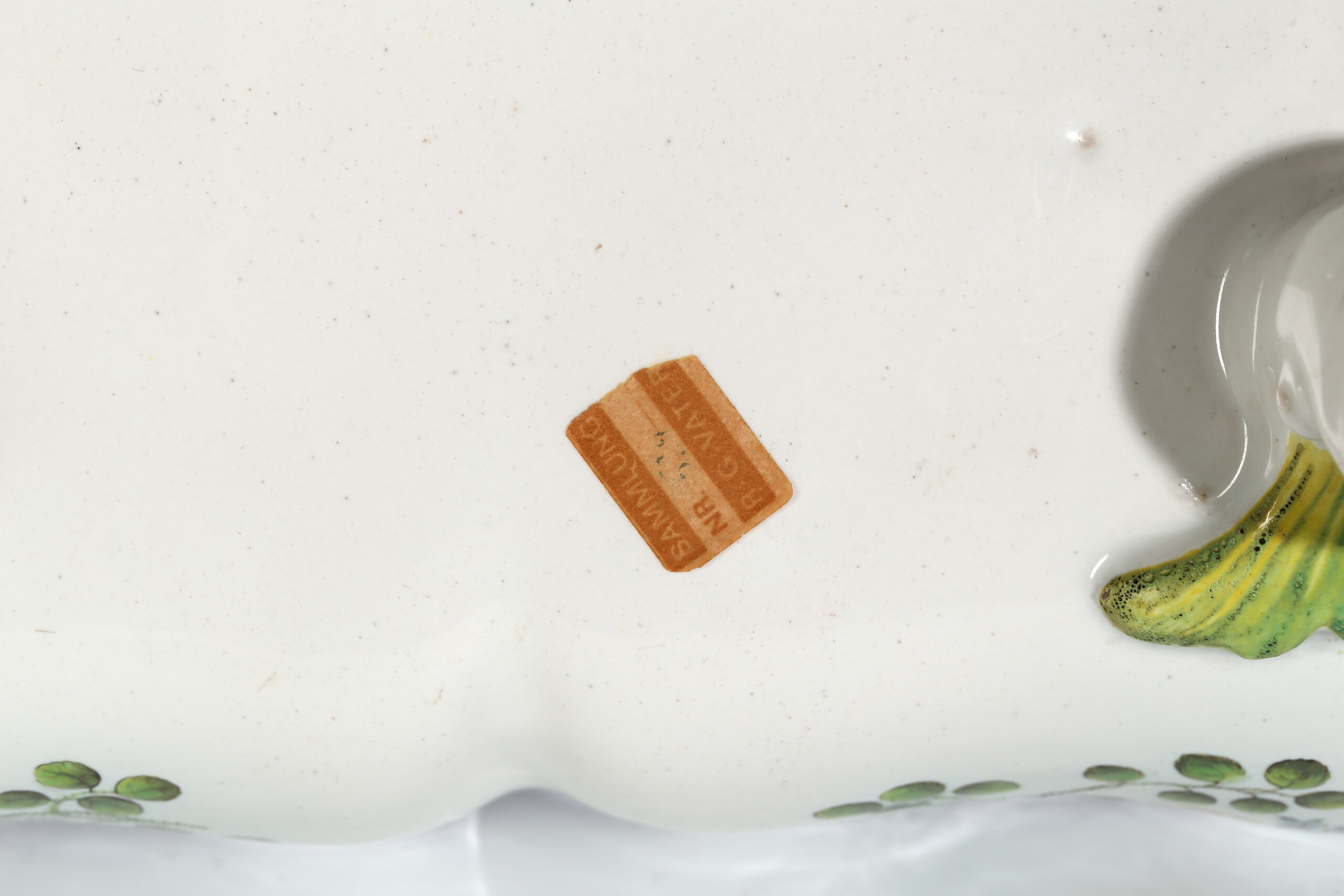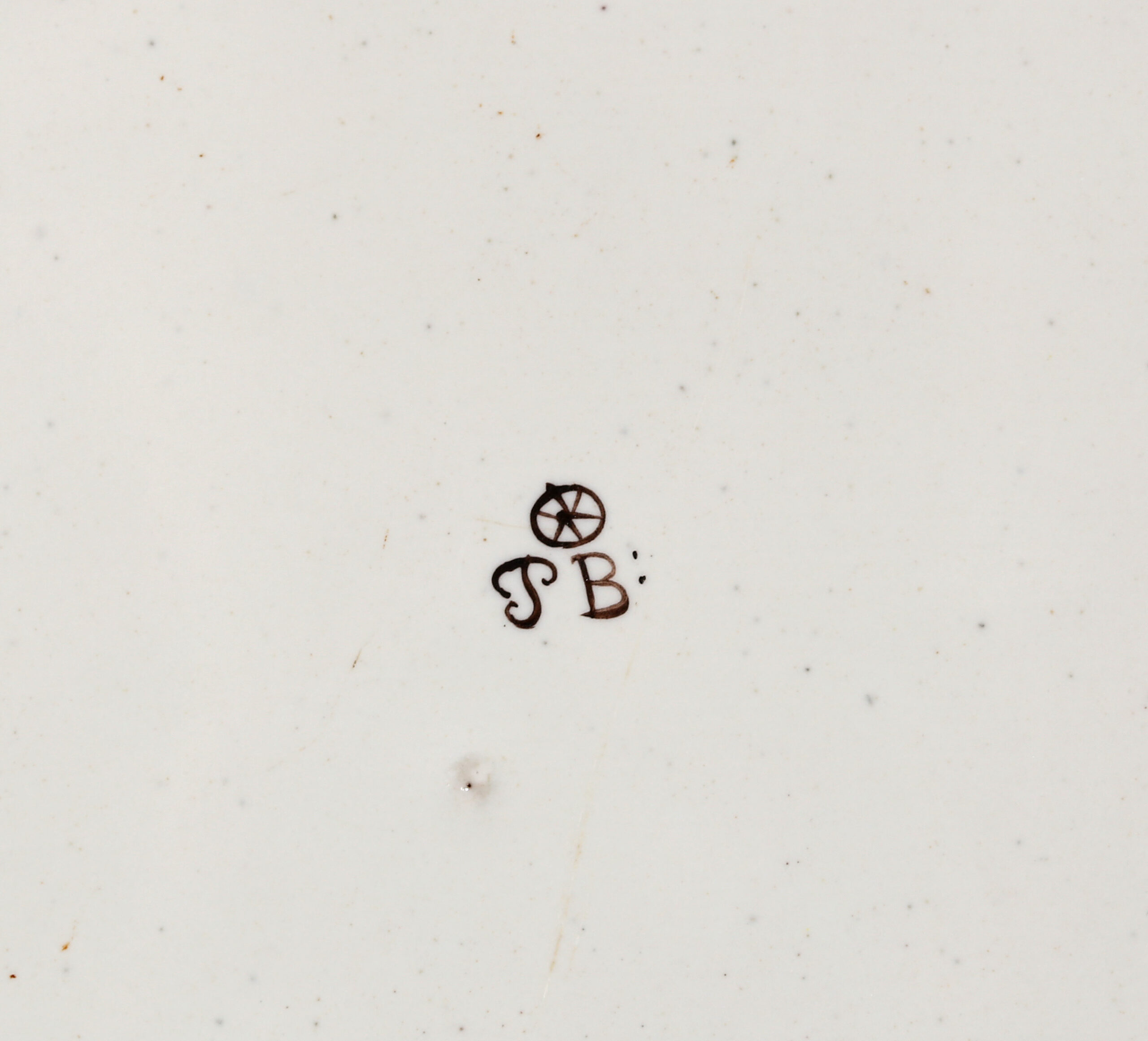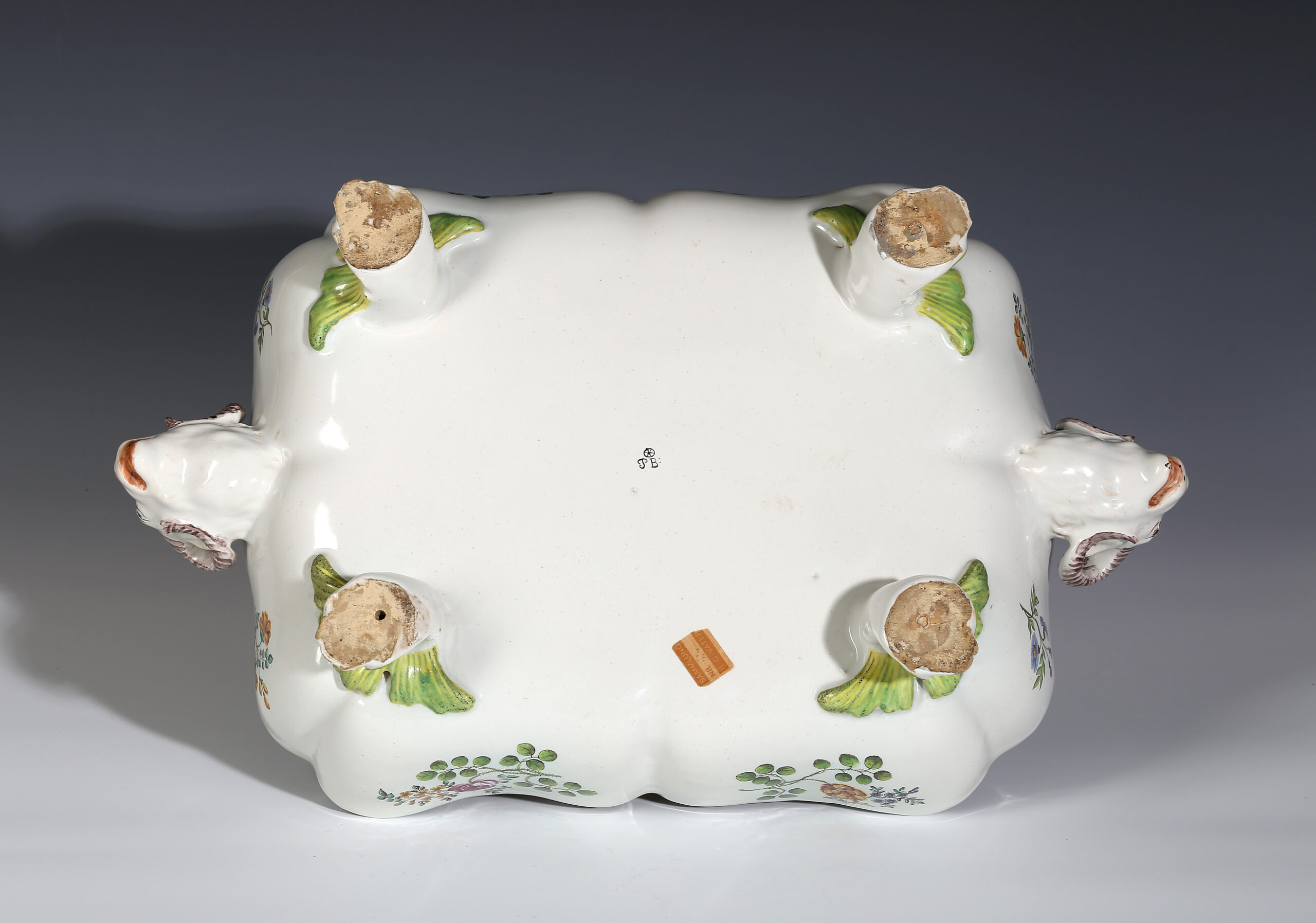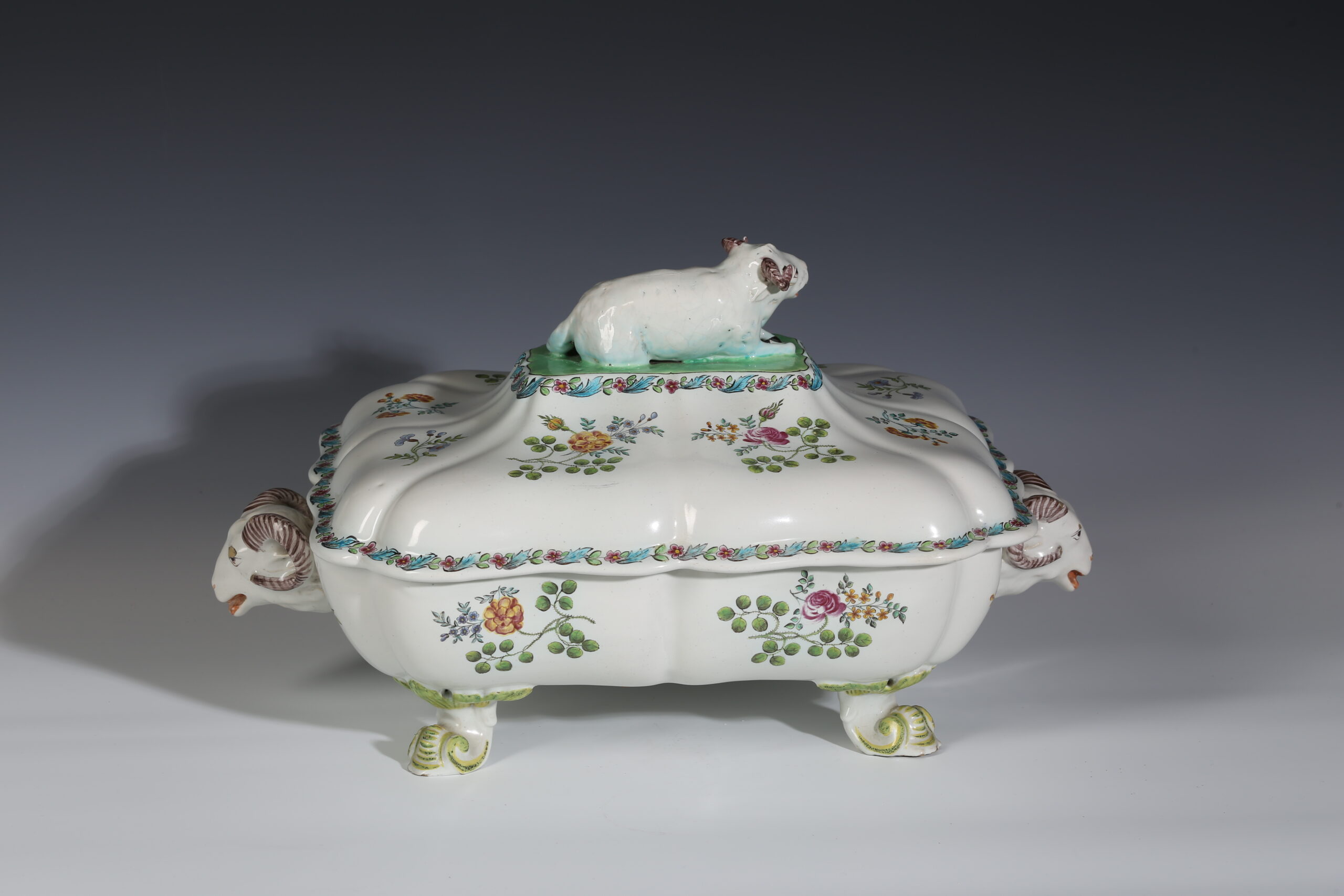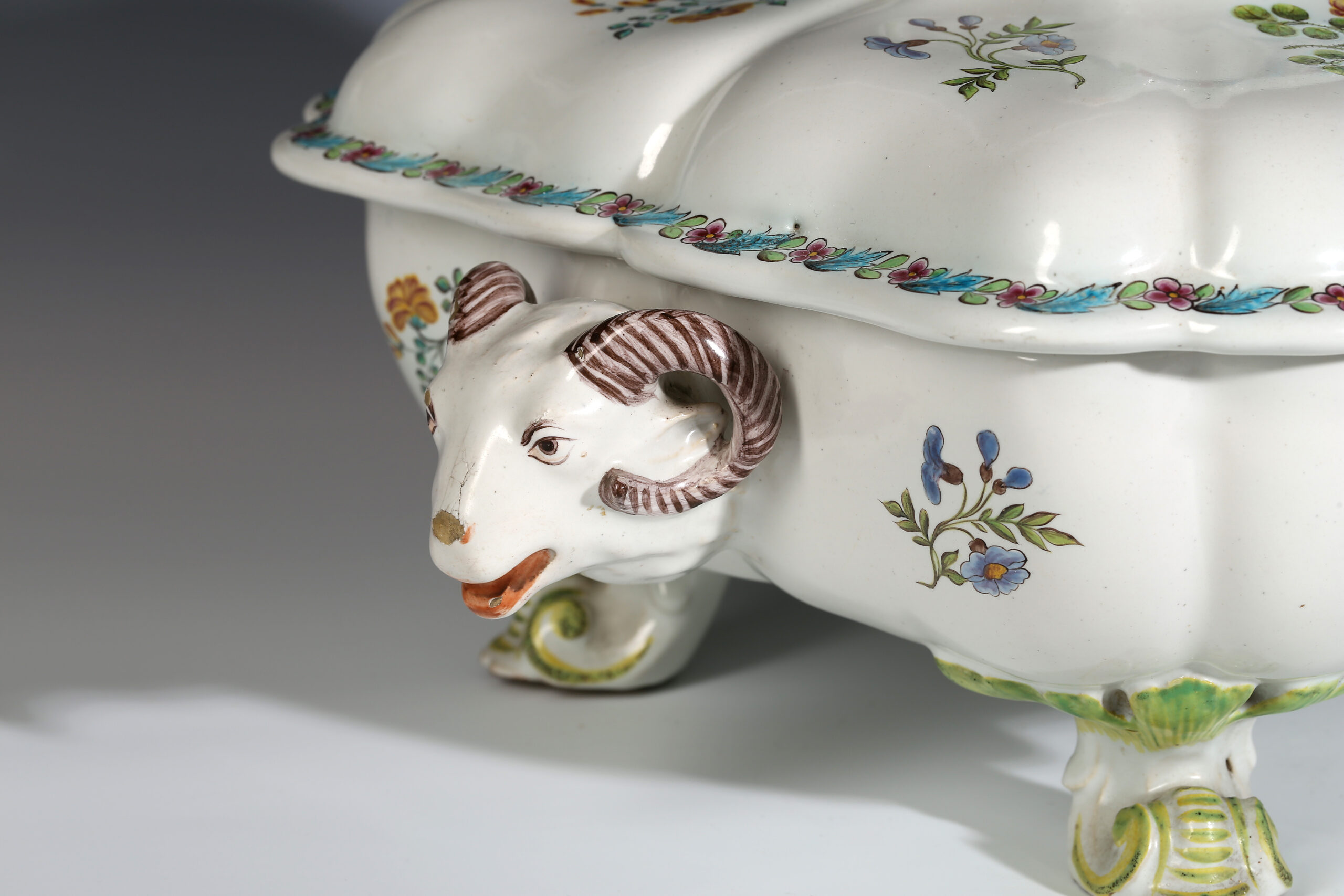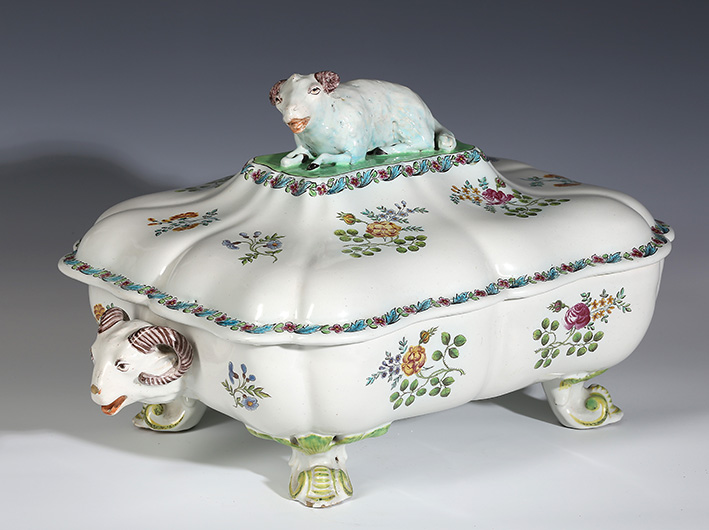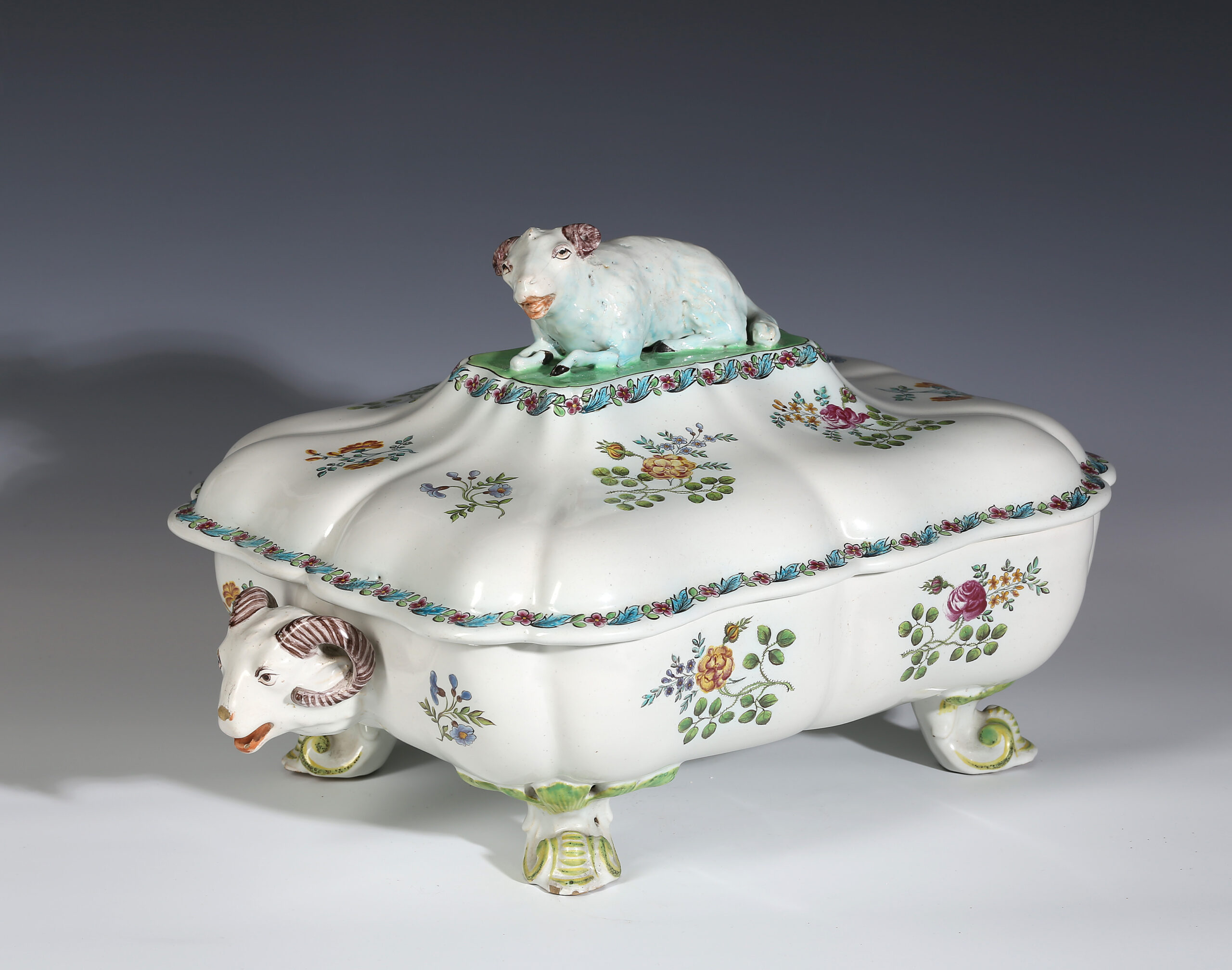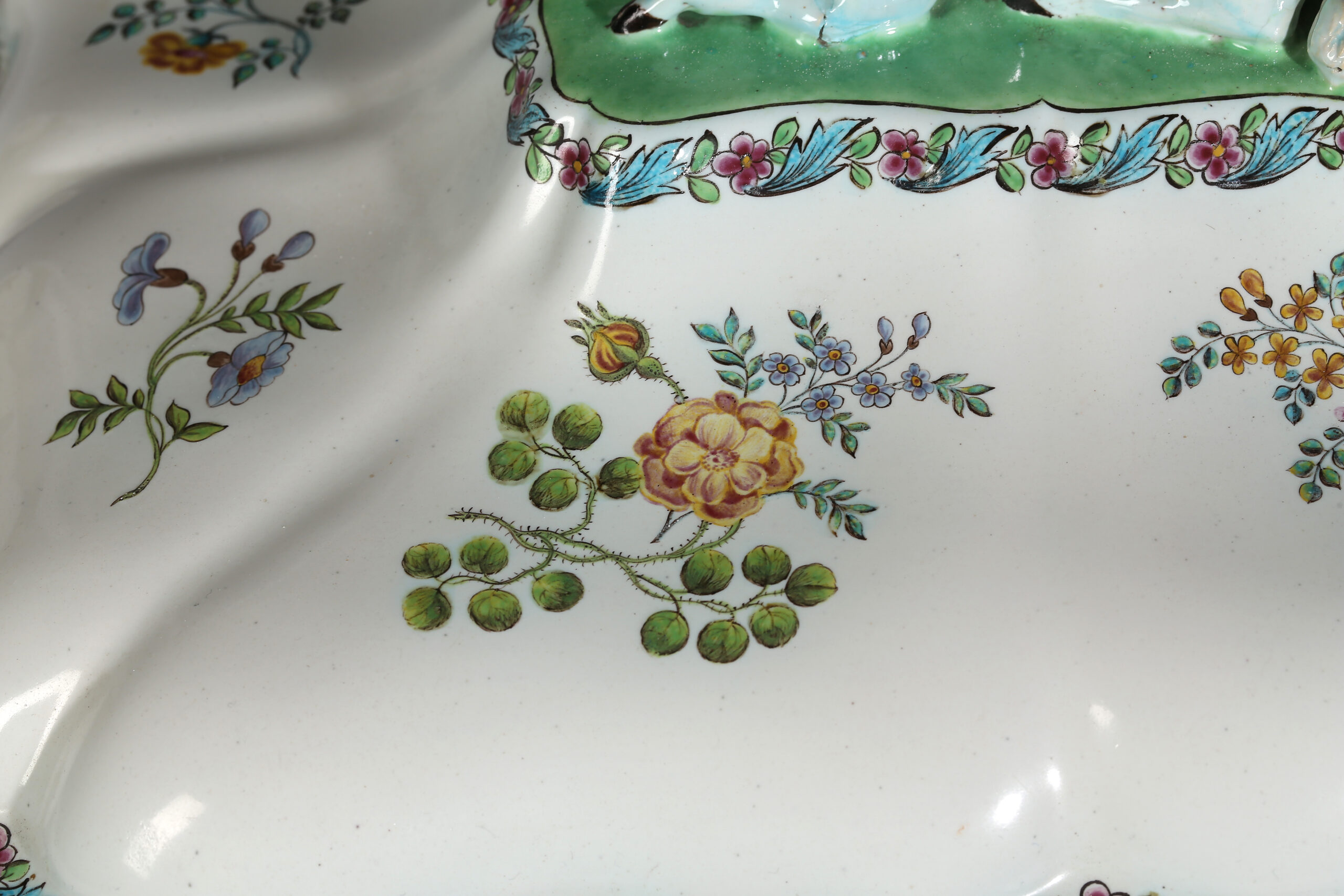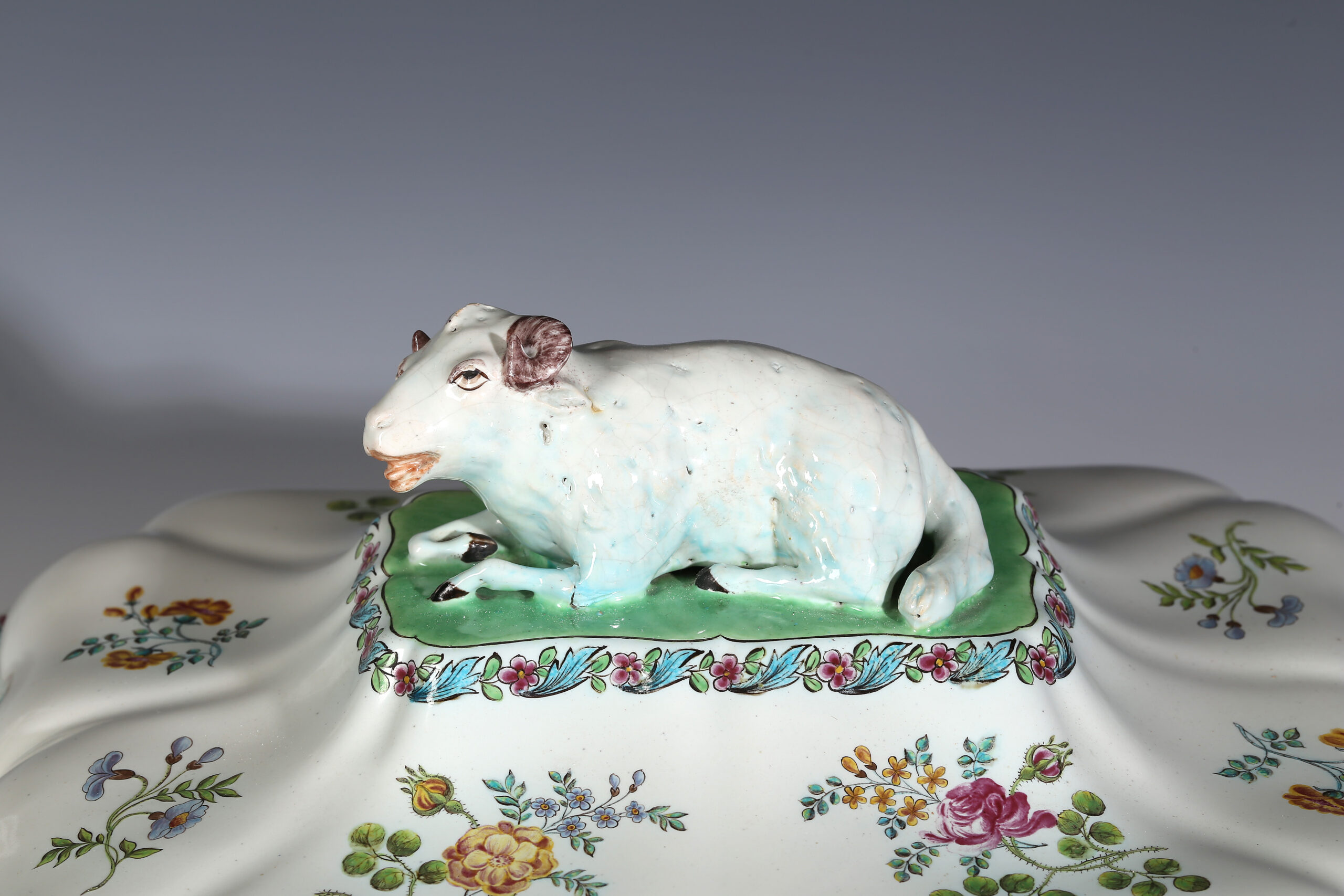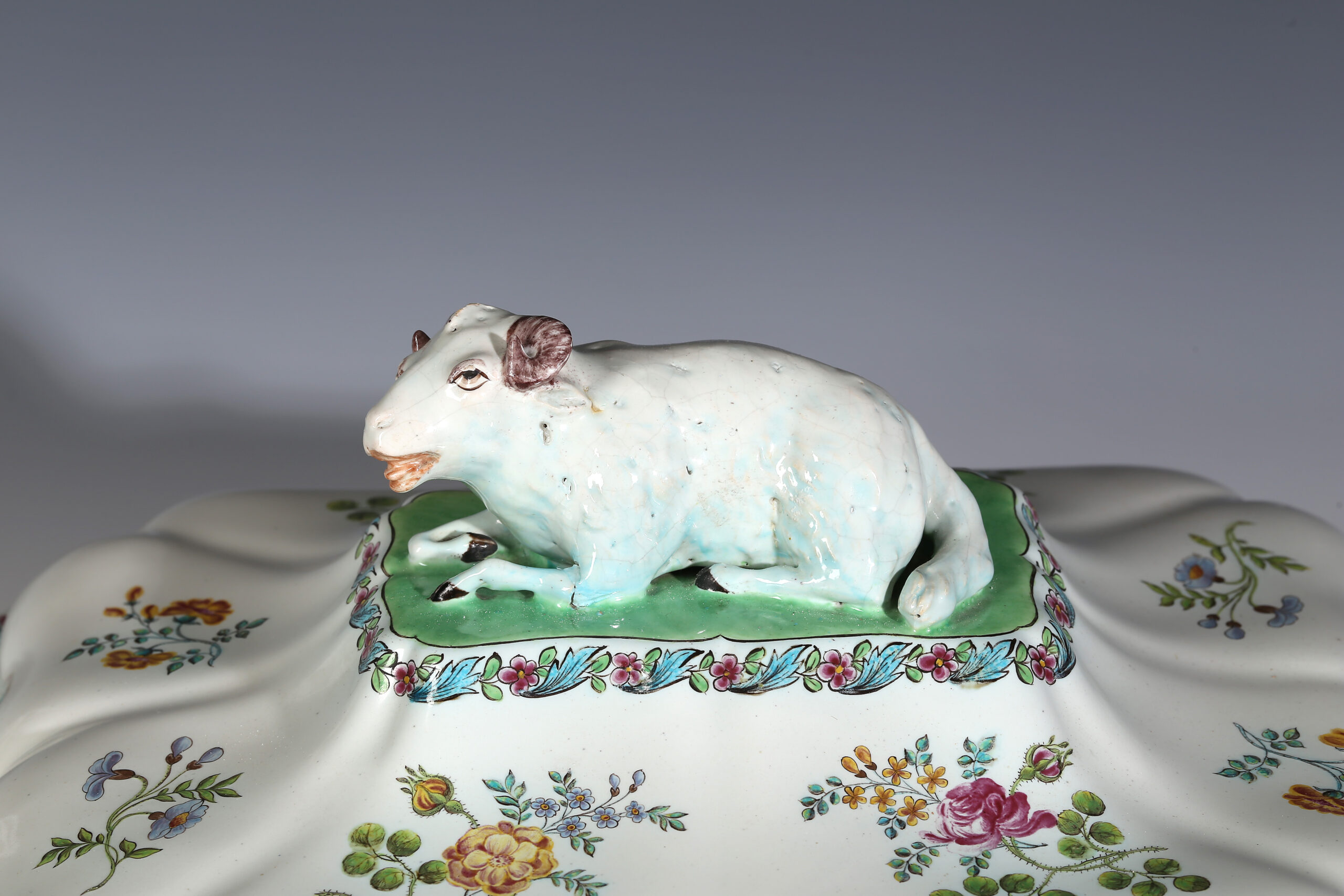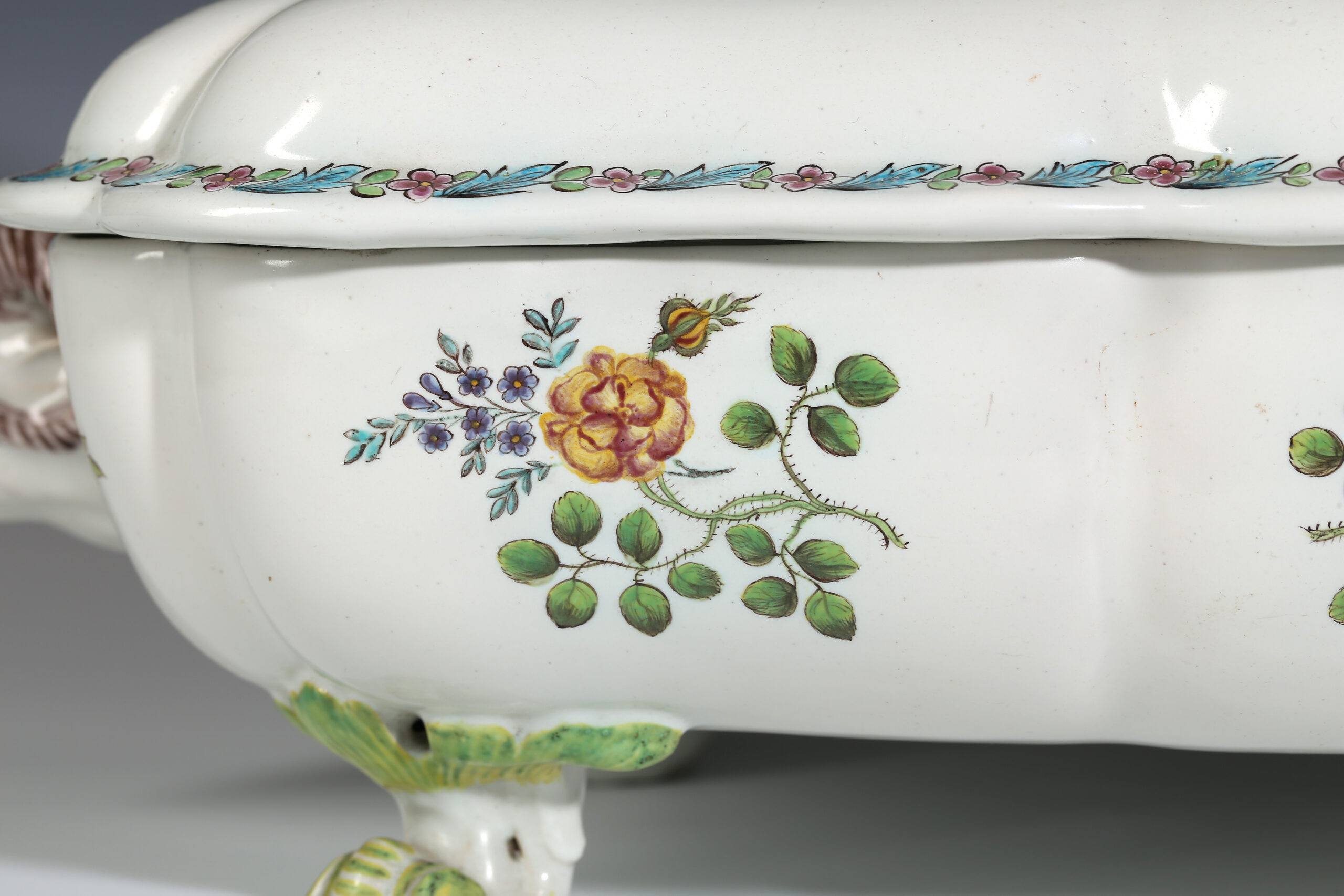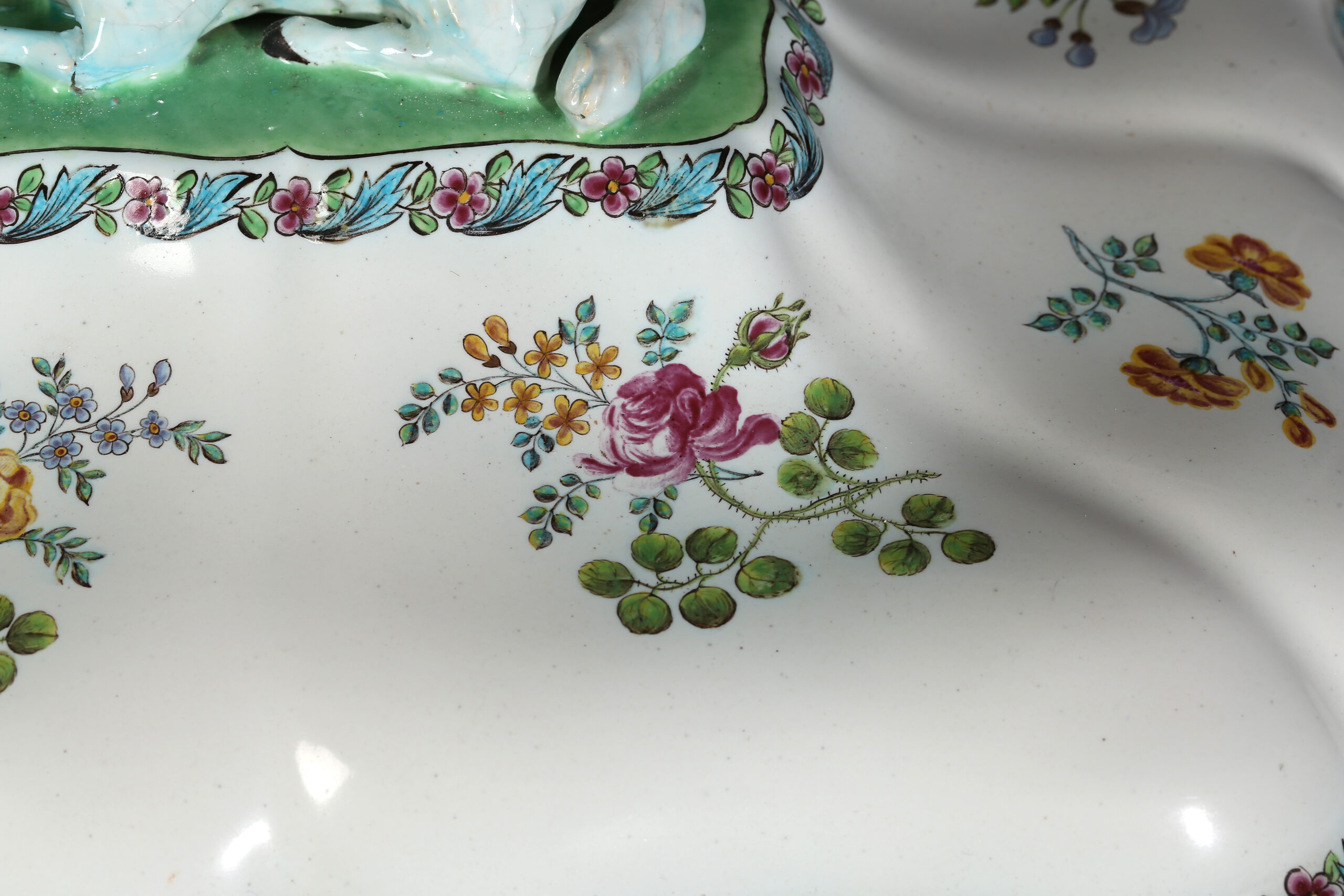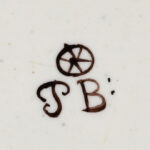
On March 1, 1746, the Elector of Mainz, Friedrich Carl von Ostein, granted a ‘privilege’ to set up a porcelain manufactory in Höchst near Frankfurt. According to the articles of incorporation, the company was supported by the two Frankfurt merchants Göltz and Clarus as financiers and the painter Adam Friedrich von Löwenfinck, who had left the Meissen porcelain manufactory ten years earlier, as technical director. Löwenfinck was one of the most creative ceramic artists of his time. He did not have the knowledge of the secrets of porcelain production, but the Höchst factory did produce faience of exceptional quality made using a light-coloured clay with a dense tin glaze.
Löwenfinck left the factory in 1749 and was followed by the new technical director Benckgraff who succeeded in the production of porcelain. Faience production declined sharply and was completely abandoned in 1758-59.
Horst Reber records four other versions of this tureen form with slight variations in the feet. Our tureen is unrecorded. The four others illustrated by Reber (Reber 1986 pp.168 & 169) are: one in the Mittelrheinisches Landesmuseum, Mainz, (Inv. Nr. 27,22) (the only one with a stand); one in the Museum für Kunsthandwerk, Frankfurt (Inv. Nr. 22715) and two in the A. Beckardt collection which were recorded in a Frankfurt catalogue of 1925. One of the Beckardt examples is also marked ‘PB’ for the painter Philip Bechel.
Reber suggest that the modeller of the tureen could have been Gottfried Becker who had witnessed the development of the Swan Service at Meissen under his master J. J. Kaendler.
Condition:
The left horn of the ram on the lid restored
Provenance:
Robert G. Vater Collection
References:
Reber 1986
Horst Reber, Die Kurmainzische Porzellan-Manufaktur Höchst, Band II – Fayencen (Klinkhardt & Biermann, Munich, 1986)
Price: £10,500


